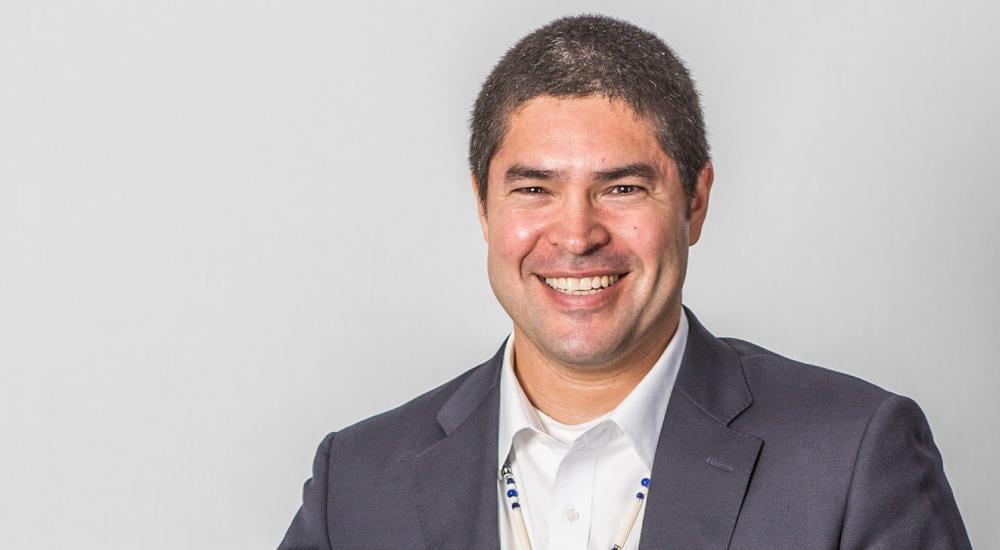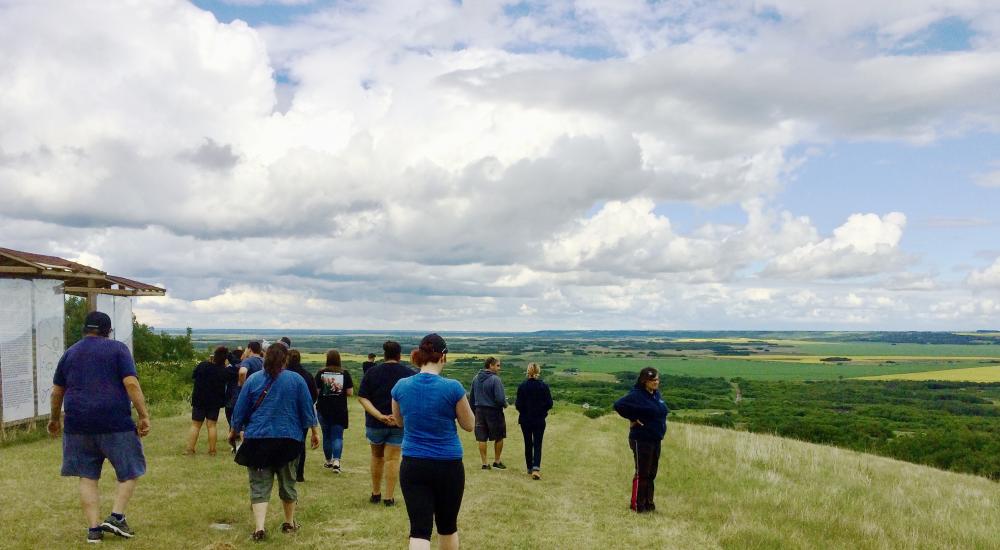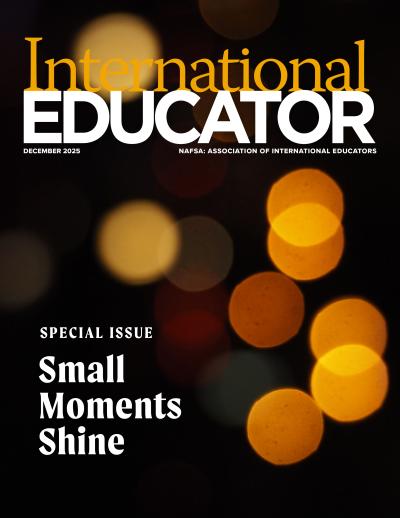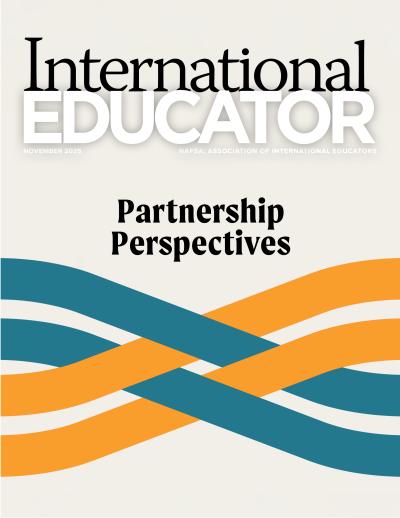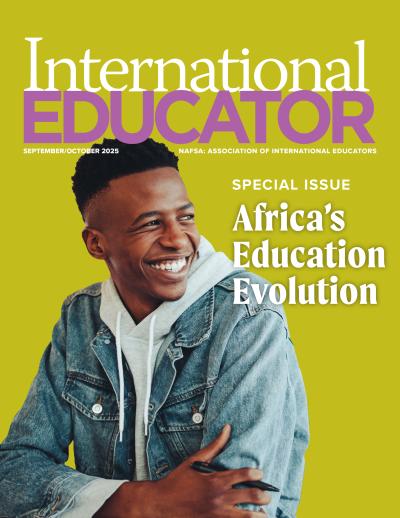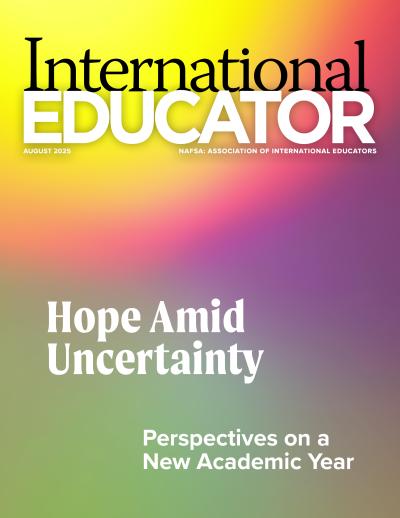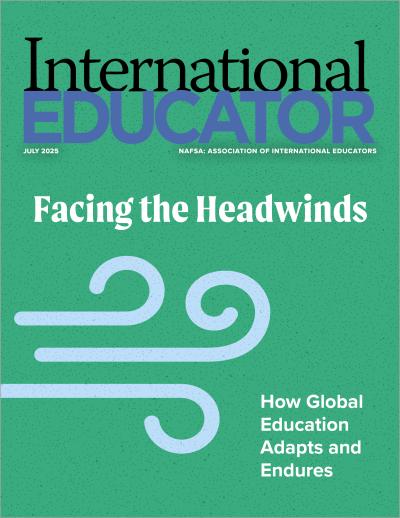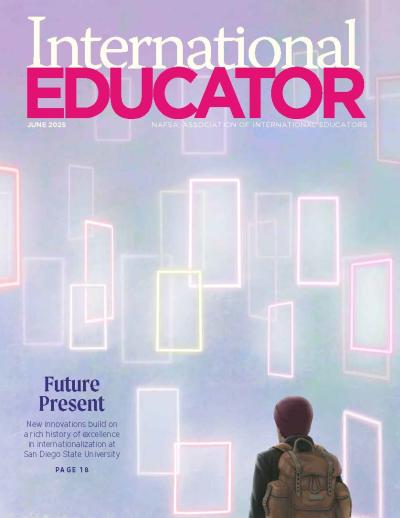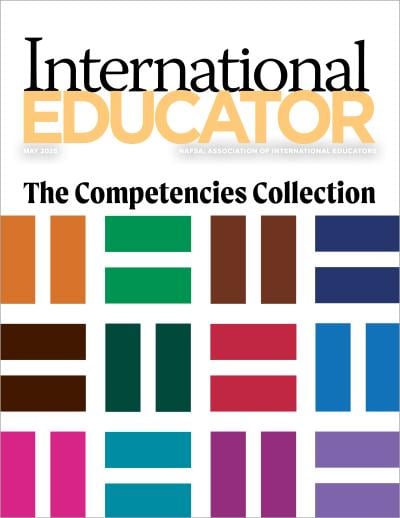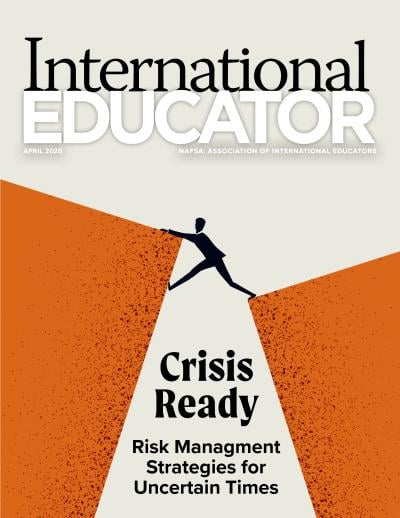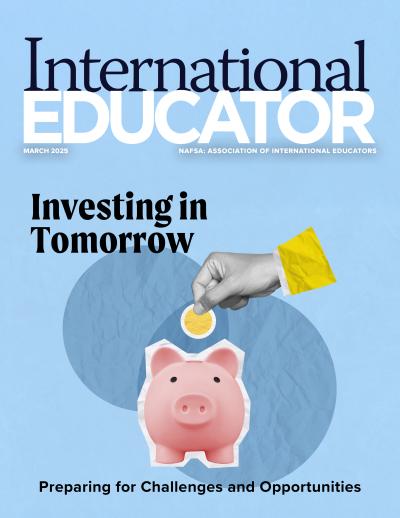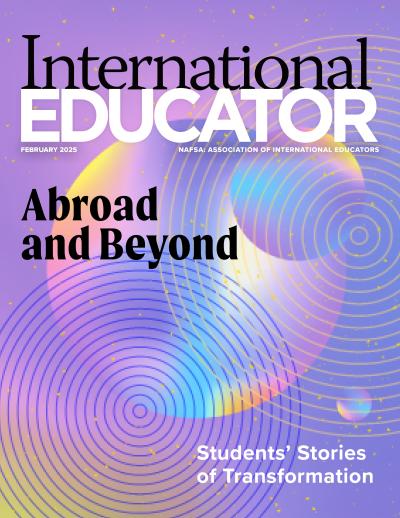Indigenous Programs Reshape International Education
On June 1, 1880, Hawaiian Kingdom lawmaker Robert Hoapili Baker proposed an unprecedented initiative: a government-sponsored study abroad program. Over the next decade, through three legislative appropriations totaling $100,000 (about $3 million today), 18 students—17 men and 1 woman—studied in six different countries: China, England, Italy, Japan, Scotland, and the United States.
This pioneering program reflected the Hawaiian Kingdom’s status as a sovereign nation that was deeply engaged in global diplomacy. At the time of its overthrow in 1893, the Hawaiian Kingdom had more than 90 embassies and consulates worldwide and treaties with 13 major powers. This robust international engagement came to an abrupt halt after the overthrow. “When America shows up, the best way to get a compliant population is to erase memory of excellence,” says Nālani Balutski, specialist faculty at the University of Hawaii-Manoa (UHM), “to erase the memory of how global we were.”
She says she intentionally doesn’t use the term “Indigenous.” “Indigeneity will have this inferior relationship with your colonial power. But what happened in Hawaii was not colonization—it’s the occupation of an independent state,” Balutski says.
In 2018, Balutski launched a modern version of the 19th-century program after discovering this history through her dissertation research. She has now led four cohorts of Native Hawaiian students abroad, carefully retracing historical connections. Her current group, preparing to visit Japan, includes two students whose great-great-grandfathers participated in the original program.
During a visit to London’s National Archives, Balutski’s students examined England’s original copy of the Anglo-Franco proclamation recognizing Hawaiian independence in 1843. One typically outspoken student was moved to tears. An archivist stopped Balutski and was curious about what she had observed. “What you observed was us having to travel halfway around the world to get a reminder of the brilliance and important status of our country and our people,” Balutski says she told the archivist.
“What you observed was us having to travel halfway around the world to get a reminder of the brilliance and important status of our country and our people.” —Nālani Balutski
Indigenous students remain significantly underrepresented in study abroad in North America; American Indian and Alaska Native students made up only 0.3 percent of all U.S. study abroad students in 2022–23, according to Open Doors. Native Hawaiian and other Pacific Islander students were grouped with Asian students in the Open Doors report, a category that made up 9 percent of U.S. students studying abroad in 2022–23. While Canada doesn’t track the number of Inuit, Métis, and First Nations students who study abroad, they are underrepresented in higher education compared with other groups.
Those numbers will hopefully rise with the advent of partnerships between international offices, Indigenous student centers, and tribal communities that seek to create more inclusive pathways to global education. “The intersection of Indigenous and international education offers opportunities for mutual learning and understanding,” says Marisa Gray, manager of global learning and engagement at Toronto Metropolitan University in Canada. “It allows us to design programs with authentic engagement, helping us to uplift Indigenous voices and give them a global perspective.”
Building Intentional Programs to Engage Indigenous Students
As governments and institutions seek ways to increase Indigenous student and community participation in global education, the Canadian government launched the Global Skills Opportunity (GSO) program in 2020 to create international opportunities for underserved students. Toronto Metropolitan University used this federal funding to launch the Global Justice and Change initiative, which aims to provide equitable access to global learning opportunities for students facing barriers, including Indigenous students.
The program, taught by an Indigenous faculty member, emphasizes cultural support alongside academic engagement. Toronto Metropolitan partnered with the University of Auckland and the Te Araroa Trust in Wellington, New Zealand (“Aotearoa” is the Māori name for the country), to immerse students in Māori culture and traditions. “The program aims to provide students with an opportunity to learn about their own culture outside of Canada and gain a global perspective on Indigenous issues,” Gray says.
The GSO funding has supported similar programs at other Canadian institutions. Douglas College, based in greater Vancouver, British Columbia, developed its Indigenous Global Learning Program in collaboration with the University of the Fraser Valley and Langara College. The program combines a semester-long anthropology course with two-week field schools at Northern Arizona University (NAU) and UHM.
“The program aims to provide students with an opportunity to learn about their own culture outside of Canada and gain a global perspective on Indigenous issues.” —Marisa Gray
In Arizona, the group engages in cultural activities, visits heritage sites, and interacts with local Indigenous communities, including the Hopi and Navajo Nations. In Hawaii, the Canadian students spend two weeks in the summer in UHM’s community studies program, which is taught by Willy Kauai, the director of Native Hawaiian student services at the college.
Both the Toronto Metropolitan and Douglas College programs are built around engaging with local communities. When the Canadian students traveled to NAU, they were accompanied by an elder, Auntie Marnie. She worked alongside local Indigenous leaders in Flagstaff, modeling cross-cultural relationship building for students.
“She stood back and let the other elder take the lead and model this idea of weaving things together,” says Jennifer Anaquod, Anishnaabe and Nehiyaw from Muscowpetung First Nation, who serves as director of Indigenous academic initiatives at Douglas College. “She did it in such a beautiful way that the students were like, ‘Oh, we can bring our cultures together.’”
The impact of these programs extends beyond study abroad participants. Douglas College’s Indigenous Student Services now hosts interactive cultural events for visiting international students, creating opportunities for meaningful exchange. During one session, Mexican exchange students made fry bread with Indigenous students, which sparked conversations about traditional foods.
“We started to talk about the difference between fry bread and tortilla, or chalupa, and their stories of how their grandma taught them [to make these foods],” Anaquod says. “All of a sudden, we’re connecting through story and similar experiences, as opposed to me standing up and saying, ‘This is what’s happening to us as Indigenous people in Canada.’” The success of these exchanges has also encouraged faculty across campus to consult with Anaquod about incorporating Indigenous perspectives into their own classes.
“All of a sudden, we’re connecting through story and similar experiences.” —Jennifer Anaquod
The programs also demonstrate the value of diverse leadership perspectives. Anaquod describes how having both Indigenous and non-Indigenous program leaders created meaningful learning opportunities. “Having a non-Indigenous instructor and then having…a non-Indigenous ally at NAU modeled something beautiful,” she says. “They saw what it was like to do good work and for somebody as a non-Indigenous person to step up.”
While GSO funding ended in March 2025, both institutions are exploring ways to maintain these valuable cross-cultural connections. “These relationships go beyond the actual program,” Anaquod says. “Anywhere we can break down barriers and bring folks together builds understanding [and] allyship and breaks down stereotypes.”
Working with Indigenous Communities to Tackle Global Challenges
Traditional approaches to international education often struggle to address the unique experiences of Indigenous students, says Natalie Lulia, acting regional director for the Americas, Middle East, and Europe at Education New Zealand, who previously led Indigenous internationalization at the University of Waikato. She emphasizes the need to make sure that programs are built to fit Indigenous students, rather than just sending them to the study abroad office. One of her goals is to also “remind our people that they are already part of the global community.”
Lulia takes a community-led approach to international education. “We were able to create programs that essentially took Māori and Pacific students to engage with Indigenous communities under the bigger mantle of this notion of global citizenship under the United Nations Sustainable Development Goals,” Lulia says.
One of her initiatives at the University of Waikato involved a cultural exchange with the Ainu, an Indigenous people who now live primarily on Hokkaido, Japan’s northernmost island. The program was carefully crafted with input from local Indigenous leadership, who helped select students to participate. Māori traveled to Japan to work with the Ainu, focusing on shared challenges such as language revitalization.
“Because we used frameworks like the United Nations Sustainable Development Goals, it was an opportunity to bring Indigenous communities together and give visibility to Indigenous knowledge that actually [can help solve] global challenges we’re facing, like climate change,” Lulia explains.
Infusing the Global into Indigenous Studies
In the United States, individual institutions are also pursuing international opportunities for Indigenous students. The University of Oregon (UO) started an exchange program with the University of Otago in New Zealand in 2017–18. “We as a public institution in the state of Oregon, where there are many federally recognized tribes, have a long history of engagement with tribal communities at the institutional level,” says Will Johnson, assistant vice provost for global engagement and director of Global Education Oregon.
UO’s preexisting relationships with local tribal communities have helped shape the university’s approach to international programs for Indigenous students. The university was trying to expand opportunities for underserved student populations to diversify who was able to study abroad. At the same time, UO was both enrolling more Native-identifying students and students who were studying Indigenous issues and increasing faculty in its Indigenous studies department. Faculty noted that while their research naturally encompassed global perspectives on Indigeneity, students often approached the subject through a purely local lens.
“We entered into this conversation with faculty who were really trying to figure out better ways to link together projects and understandings of Indigeneity from an international perspective, beyond the way we might traditionally think about it in the United States,” Johnson says.
The result of these conversations was the development of the exchange program with the University of Otago, which is designed to help students understand Indigenous experiences and responses across different cultural contexts. The program provides full funding for small cohorts of students to study at Otago’s Te Tumu School of Māori, Pacific, and Indigenous Studies. Working closely with UO campus programs for Native students and tribal elders from the local community, the program prioritizes recruiting tribal members who are also earning minors in Native American and Indigenous studies.
“We entered into this conversation with faculty who were really trying to figure out better ways to link together projects and understandings of Indigeneity from an international perspective, beyond the way we might traditionally think about it in the United States.” —Will Johnson
In addition to completing traditional coursework, program participants live in residential communities that intentionally mix international, Māori, and non-Māori New Zealand students. The program emphasizes full engagement with both academic and cocurricular activities, including ceremonies and service learning with local Māori communities.
While the original vision for the UO program included full reciprocity—bringing Otago students to Oregon for similar immersion with local tribal communities—financial realities have posed challenges. Cost barriers exist on both sides: While UO is able to waive tuition for incoming students, living expenses in Eugene remain prohibitive for many Otago students, Johnson says.
Despite these challenges, the initiative has catalyzed broader institutional engagement with global Indigenous education. As UO recruits its next New Zealand cohort for fall 2025, the university has also developed faculty-led programs examining Indigenous rights and climate change in Bolivia, Mexico, and Samoa, reaching a wider range of students while maintaining focus on Indigenous perspectives and experiences.
“We’re seeing growth out of this initial concept that was only impacting a few students in a really powerful way,” Johnson says. This summer, between 25 and 45 students will study similar concepts across multiple programs worldwide, demonstrating how targeted international Indigenous exchange programs can create ripple effects throughout an institution’s global engagement efforts.
Starting Local, Going Global
At NAU, preparing Indigenous students for international experiences requires rethinking approaches to study abroad, and, similar to UO, the university’s efforts have been guided by long-standing local tribal relationships. “For our students, studying at the university and being in Flagstaff can already feel like a study away experience,” says Angelina Palumbo, director of education abroad.
This understanding shapes how NAU approaches international programming. Building international opportunities starts with strong domestic foundations. The university embeds Indigenous perspectives into its curriculum through required coursework and creates stepping stones to international experiences through local engagement.
Its Care for Nahasdzáán (“Mother Earth” in Diné/Navajo) is offered as a 7.5-week study away program through the Center for International Education. The program connects students with Navajo and Hopi communities to help them understand the gap between mainstream Western and traditional Indigenous lifestyles. The program includes both Indigenous and non-Indigenous students as well as international exchange students, fostering cross-cultural understanding at both local and global levels.
This local-to-global approach shapes how NAU develops study abroad opportunities. Working closely with the Native American Cultural Center and Indigenous faculty, the international office identified key barriers to participation beyond funding—including the need for family and community support and the importance of having Indigenous faculty leaders. To encourage students to participate in education abroad, NAU staff organizes events such as a panel called Stories with an Auntie, where Indigenous students, faculty, and staff share their international experiences.
The university also considers cultural practices in program design. “One of the major barriers we identified was [that some Native] students need to do prayer ceremonies before they leave, and it’s expensive,” Palumbo says. “We were looking to collaborate with our cultural center to provide funding to do the ceremonies required prior to leaving.”
“It should be part of our job. It’s not an extra thing to promote Indigenous study abroad.” —Angelina Palumbo
For Palumbo, supporting Indigenous students in study abroad cannot be treated as an add-on responsibility. “It should be part of our job,” she emphasizes. “It’s not an extra thing to promote Indigenous study abroad.” This dedicated focus has helped NAU achieve significant gains in study abroad participation rates for Indigenous students, which in some years has reached 3 percent of all study abroad students at NAU. That number is well above the 0.3 percent national average.
The university’s approach emphasizes the importance of diverse perspectives within programs. NAU also sees value in including non-Indigenous students in these programs. “Having programming that has a combination helps non-Native people see perspectives different than maybe what they’ve read in books or seen in movies,” Palumbo explains. “We’ve had students from Asia that didn’t know what a Native American was. Having that historical context shared through the Indigenous lens really does change how people see the world.”
Although there are benefits to integrating Indigenous and non-Indigenous students into the same program, creating programs specifically for Indigenous students helps them not feel alone during their global experiences. “They can relate in their culture shock and international experience together, from shared experiences,” Palumbo says.
The university has developed partnerships with institutions that have strong Indigenous support systems, including exchange programs in Australia, Canada, and Mexico. A recent NAU policy eliminating tuition for Indigenous students also extends to exchange programs, making international study more financially accessible.
Redefining Global Education Through Sovereignty
At many large public universities, international education is thought of in terms of student mobility or globalizing the curriculum, like the New Zealand program at OU. But educators at Diné College, the oldest tribal college in the United States, are reimagining international education through distinct lenses of sovereignty and Indigenous knowledge systems.
“For us as Indigenous people in the United States, we are sovereign nations,” explains Nonabah Sam, Diné (Navajo) and TeTsuGeh (Tesuque Pueblo), the museum curator at Diné College.
This perspective shapes the Global Arts, Language Arts, Cultural Traditions in Indigenous Communities (GALACTIC) program, an initiative supported by Diné College, Navajo Technical University, and Indiana University. Through events like the Smithsonian Folklife Festival in Washington, D.C., participants from the Navajo Nation engage with Indigenous peoples from places like China, Kenya, and Peru, exploring shared challenges and solutions.
“We’re being very strategic. When this program does become available, we want students to understand the commonalities that other Indigenous people are facing around the world.” —Nonabah Sam
During one festival, a Peruvian weaver shared how water access, land disputes, tourism, and Indigenous rights affect her traditional practice—issues that resonated deeply with Navajo communities facing similar challenges, Sam says.
The program challenges traditional definitions of international education. Amy Horowitz, director of GALACTIC at Indiana University, questions why students cannot usually use fellowships for international research to study in tribal nations. “The Navajo Nation is a sovereign nation, recognized through treaties signed in the mid-1800s,” she says.
Diné College is in the early stages of developing an Indigenous global studies degree with the school, working to determine how the program can best serve its students while following Diné philosophy. “We’re being very strategic,” Sam says. “When this program does become available, we want students to understand the commonalities that other Indigenous people are facing around the world.”
Reclaiming Global Connections
These distinct approaches to the international and the Indigenous offer new perspectives on global education. While traditional study abroad often focuses on cross-cultural exposure, these initiatives emphasize strengthening knowledge exchange, addressing shared challenges across communities, and reclaiming historical relationships. “We have memory of excellence that predates America showing up,” Balutski of UHM says. “We have memory of the possibility of reviving those kinds of things again.”
This approach also resonates in New Zealand, Lulia says. “One of the main goals was to reconnect our students to the fact that actually they have already participated as global citizens,” Lulia says. “From a Māori and Pacific perspective, our ancestors voyaged to the biggest body of water and settled there. So, international education was an opportunity to remind our people that this space isn’t new to you. It actually runs in your blood.” •
About International Educator
International Educator is NAFSA’s flagship publication and has been published continually since 1990. As a record of the association and the field of international education, IE includes articles on a variety of topics, trends, and issues facing NAFSA members and their work.
From in-depth features to interviews with thought leaders and columns tailored to NAFSA’s knowledge communities, IE provides must-read context and analysis to those working around the globe to advance international education and exchange.
About NAFSA
NAFSA: Association of International Educators is the world's largest nonprofit association dedicated to international education and exchange. NAFSA serves the needs of more than 10,000 members and international educators worldwide at more than 3,500 institutions, in over 150 countries.
NAFSA membership provides you with unmatched access to best-in-class programs, critical updates, and resources to professionalize your practice. Members gain unrivaled opportunities to partner with experienced international education leaders.


